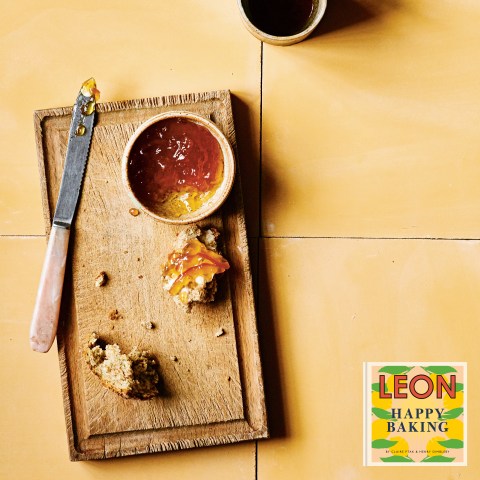Brie in Brioche

I love to make this for lunch for the family or friends. In France it is quite usual to serve a light brioche with something savoury like cheese, liver pâté or smoked salmon; when we make this in classes it is often quite a revelation and always a big favourite when we sit down and tuck into it at lunchtime. Turn it into a bit of a party piece by serving some charcuterie on a separate board and putting out a bowl of warm new potatoes, which everyone can use to scoop out all the cheese first, like a fondue. When the cheese has gone I make a big green salad in a bowl, toss it with plenty of vinaigrette (made with 1–2 parts wine vinegar to 3–4 parts extra virgin olive oil and 1 teaspoon Dijon mustard, seasoned with sea salt and freshly ground black pepper) and some chopped walnuts, and tip it into the space left by the cheese. I then cut a big wedge for everyone to enjoy a fantastic mix of cheesy, herby, garlicky bread and salad.
If you buy a 1kg brie, this will feed 8–10. I may be French but, because it’s good to support regional produce, I use a nice ripe Somerset brie – but not so over-ripe that it is running over the table!
SERVES 8–10
For the dough
200g full-fat milk
3 medium eggs
500g strong white bread flour, plus extra for dusting
20g fresh yeast
60g caster sugar
10g fine sea salt
50g cold unsalted butter
strong white bread flour, for dusting
For the glaze:
2 eggs
pinch of fine sea salt
1 tablespoon milk
1 large (1kg) ripe brie
2 garlic cloves, peeled and finely sliced
a few small sprigs of fresh rosemary and thyme
2 tablespoons good extra virgin olive oil
dash of Pernod (optional)
For the glaze:
2 eggs
pinch of fine sea salt
Make the dough
1 Put the milk and eggs into the bowl of a food mixer, then add the flour (and seaweed, if using). Break up the fresh yeast and add to one side of the bowl. Add the sugar and salt on the other side of the bowl. Break the butter into pieces on top.
2 Mix on a slow speed for 4 minutes, then increase the speed to medium and continue to mix for about 12–15 minutes until the dough comes away cleanly from the sides of the bowl.
3 Lightly flour the work surface and a clean bowl. Use a scraper to turn the dough onto the work surface.
4 Form the dough into a ball and leave to rest in the bowl for about 1 hour until just under double in size.
5 When the dough has rested, lightly flour your work surface and roll the dough into a rough circle.
6 Place a large baking ring (about 30cm diameter) on top of a baking tray, then press in a large sheet of baking parchment.
7 Lower the dough into the paper and use your fingertips to gently press it down in the centre and outwards into the shape of the ring so that you create an indent big enough to hold the brie while forming a rim around the outside of the cheese.
8 Put in the brie and score the surface with a sharp knife in criss-cross fashion.
9 Push the slices of garlic into the cuts that you have made, along with the sprigs of fresh rosemary and thyme. Drizzle the whole thing with the olive oil. I like to sprinkle over a tablespoon of Pernod too, but that is up to you.
10 Cover with a large freezer bag and leave to prove for about 45 minutes. During this time the rim of the dough will almost double in size.
11 While the dough is proving, preheat the oven to 190°C and beat the eggs with the salt for the glaze.
12 Brush the rim of the dough with the egg glaze and transfer the tray to the preheated oven. Turn down the heat to 180°C and bake for about 30–40 minutes until the cheese has melted and the rim of the brioche is a dark golden brown. If you lift up the parchment paper carefully you should be able to see through it to check that the base of the brioche is also dark golden brown.
13 Remove from the oven and, holding the baking parchment, lift the brioche from the ring onto a board and invite everyone to tuck in while it is still warm.
Recipe extracted from Crumb by Richard Bertinet







